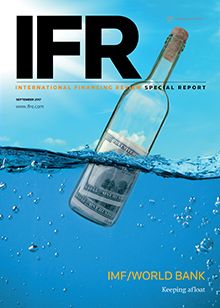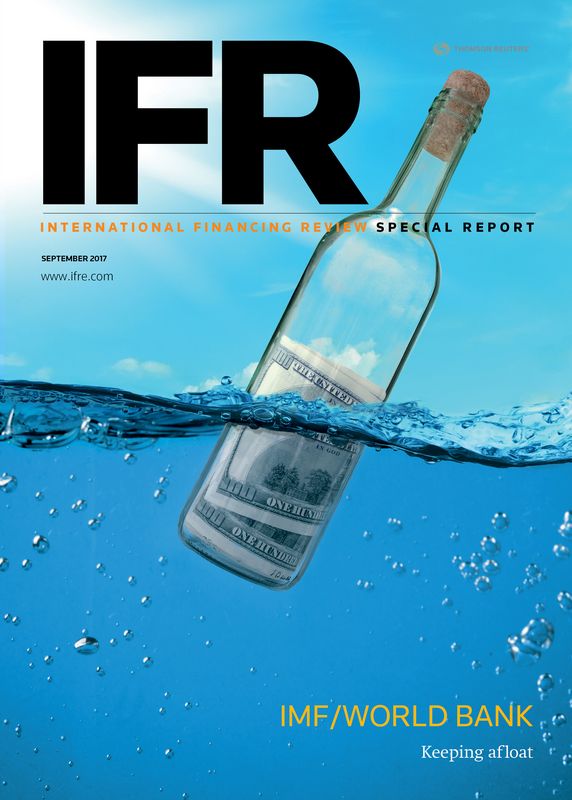Keeping afloat: Emerging market countries, where the IMF has concentrated much of its resources, reveal a strange state of affairs.
On the one hand, there were warnings from the fund itself that they and their corporations risked becoming loaded down with debt, both in local and foreign currency, and that the prospect of rising US interest rates risks made them vulnerable.
On the other, while the initial Federal Reserve move caused a slight blip in terms of currency and bond yields, the situation soon reverted largely to how it had been. The lack of any real follow-through – or at least as swiftly as originally envisaged – served to maintain a sense of calm.
Political considerations, be they country-specific or international, were seemingly disregarded, or at least afforded only perfunctory inspection. From an economic perspective, much was made of the positives, while the negatives were seen as nothing that could not be addressed, or at least explained away.
Against a backdrop where the returns on offer in much of the developed world remained low and government stimulus programmes forced investors to think hard about how to best deploy their cash, momentum was on the side of those asset classes that promised that little bit more. A case for rehabilitation if ever there was one.
According to IMF data published in August 2016, two of its biggest borrowers were Greece and Ukraine. Both made a return to the bond markets in 2017, and more could be to come.
Having issued a €3bn five-year bond in July, Greece might issue again before the end of the year. And this could be followed by up to two more next year, as it comes to the end of its third aid programme and attempts to wean itself off more than €200bn of official sector financing.
The country completed successful negotiations with its official sector creditors in June, which led to its return to the market for the first time in three years. Greece’s main aim now is to establish a new issuance track record and so avoid having to receive a fourth aid programme.
And Ukraine followed in September, selling its first Eurobond as a standalone credit since 2013, surprising some in that it pressed ahead with the offering before the IMF had disbursed its next tranche of money from a US$17.5bn bailout programme. This was in spite of talk as recently as June that it would likely wait.
And even though the disbursement is dependent on the passage of important reforms, investors again chose to focus on the positives.
Both sovereigns included liability management exercises, replacing shorter, high-coupon paper with longer tenors at lower rates. For the issuers, there was an improvement in terms; and for investors, much needed returns.
In addition to these, Mexico, one of the biggest beneficiaries of precautionary IMF loan facilities, according to those August 2016 numbers, has also benefited from the renewed confidence.
Far from falling into recession, as some had feared in the run-up to Donald Trump’s presidential victory with all its ‘wall’ rhetoric, GDP is expanding at 2.3%.
For the year to August 23, US$2.3bn was raised in Mexico’s equity capital markets, compared with US$711m for the same period in 2016. So far this year, 94 mergers and acquisitions have taken place for a total value of US$3.17bn. Around US$19.6bn has been raised through international bond issuance, in 15 separate transactions.
Even those countries that have had a rockier ride have found a receptive audience. In Turkey, for example, both the sovereign and banking sector have enjoyed access to the international capital markets against a political backdrop few would describe as overly stable.
Egypt is another case in point, choosing its moment well to sell a multi-tranche bond – and then return with a tap – with conditions for emerging market names better than they have been for the past couple of years.
What also undeniably underpinned investor demand for Egypt’s bond sale was a US$12bn loan from the IMF that was given to support the government’s home-grown comprehensive economic reform plan.
While the environment at present is benign and many have been able to take advantage of it, what is clear is that the IMF’s initiatives serve to calm nerves and smooth out the road to the capital markets.
To see the digital version of this report, please click here.
To purchase printed copies or a PDF of this report, please email gloria.balbastro@tr.com


